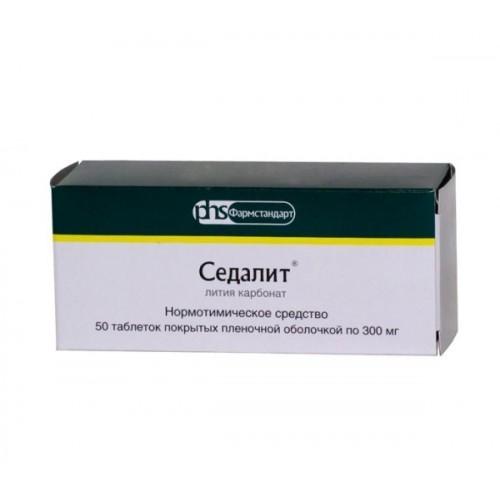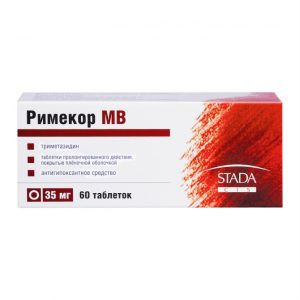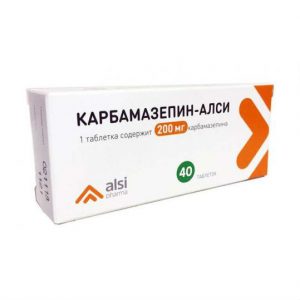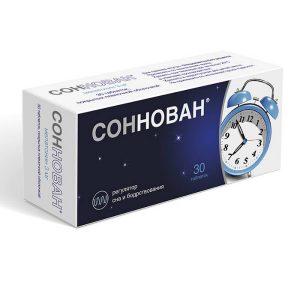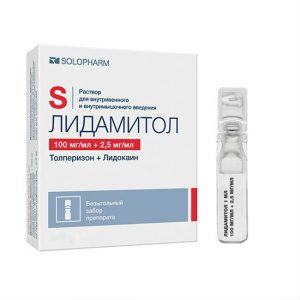Description
Latin name
SEDALIT
Packing
50 tablets
Pharmacological action
Sedalite is a normotymic drug (normalizes mental state without causing general inhibition). Sedalite also has antidepressant, sedative and anti-manic effects. The effect is due to lithium ions, which, being antagonists of sodium ions, displace them from cells and thereby reduce the bioelectric activity of brain neurons. It accelerates the breakdown of biogenic amines (the concentration of norepinephrine and serotonin in the brain tissue decreases). Sedalite increases the sensitivity of hippocampal neurons and other areas of the brain to dopamine. Interacts with lipids formed during the metabolism of inositol.
Pharmacokinetics
When taken orally, it is absorbed from the digestive tract. Cmax of active substance in plasma is reached after approximately 9 hours. Does not bind to plasma proteins. Penetrates through the placental barrier, excreted in breast milk. Not metabolized.
It is excreted by the kidneys – 95%, with feces – less than 1%, with sweating – 4-5%.
Indications
Manic and hypomanic states of various origins,
prevention and treatment of affective psychoses,
prevention and treatment of affective disorders in patients with chronic alcoholism.
Migraine, Meniere’s syndrome, sexual disorders, drug dependence.
Contraindications
Leukemia,
severe surgery,
pregnancy,
lactation.
Use during pregnancy and lactation
Contraindicated in pregnancy and lactation (breastfeeding).
Composition
1 film-coated tablet contains: active substance: lithium carbonate 300 mg
Dosage and administration
The dose is determined by the level of lithium concentration in blood plasma. Take inside. For adults, the dose is 300-600 mg 3-4 times / day. The therapeutic concentration of lithium in plasma is 0.6-1 mmol / L.
For children under the age of 12 years – 15-20 mg 2-3 times / day.
The maximum daily intake for adults when taken orally is 2.4 g.
Side effects of
From the side of the central nervous system and peripheral nervous system: muscle weakness, hand tremor, adynamia, drowsiness, with prolonged use, articulation disorders are possible, hyperreflexia.
From the cardiovascular system: heart rhythm disturbances.
From the digestive system: dyspepsia.
From the endocrine system: rarely – thyroid dysfunction.
Other: increased thirst, impaired hematopoiesis, leukocytosis, weight gain.
Drug Interaction
When used with thiazide diuretics, indapamide may rapidly increase blood plasma lithium concentrations and develop toxic effects.
When co-administered with ACE inhibitors, it is possible to increase the concentration of lithium in blood plasma and the development of toxic effects with NSAIDs – it is possible to increase the toxic effects of lithium with iodine preparations – it is possible to increase the risk of disorders of the thyroid gland with xanthine derivatives reduce its effectiveness.
When co-administered with alprazolam, a clinically significant increase in the concentration of lithium in blood plasma with acyclovir is possible – a case of increased toxicity of lithium with baclofen is described – cases of increased hyperkinetic symptoms in patients with Huntington’s chorea are described.
When co-administered with lithium carbonate with verapamil, the drug interaction is unpredictable. With the simultaneous use of lithium carbonate with diltiazem described the case of psychosis.
Increased extrapyramidal symptoms with carbamazepine may be exacerbated with haloperidol, clonazepam may cause neurotoxicity.
When used with methyldopa, the development of toxic action of lithium with metronidazole is possible – it is possible to increase the concentration of lithium in blood plasma.
When co-administered with sodium chloride, sodium bicarbonate, high sodium intake enhances the elimination of lithium, which may reduce its effectiveness.
When co-administered with norepinephrine, a decrease in the vasoconstrictive action of norepinephrine with phenytoin is possible – cases of the development of symptoms of toxic action of lithium with fluoxetine are described – an increase in the concentration of lithium in the blood plasma and the development of toxic effects with furosemide, bumethanide, may be described.
At simultaneous use with chlorpromazine and other phenothiazines it is possible to reduce the absorption of phenothiazines from the gastrointestinal tract and decrease their concentration in blood plasma by 40%, increase the intracellular concentration of lithium and the rate of its excretion with urine, increase the risk of developing extrapyramidal reactions, in the elderly).
Storage Conditions
In a dry, dark place at a temperature not exceeding 25 ° C.
D active substance
lithium carbonate
Terms leave through pharmacies
In retseptu
lekarstvennaja form
tablets
Pharmstandard-Leksredstva, Russia
